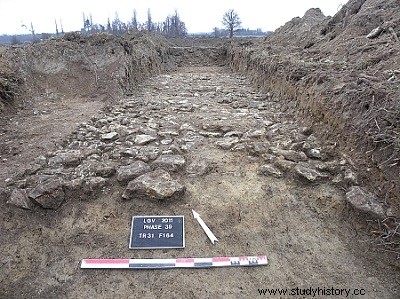
The construction of a Roman road does not stop at the end of the actual construction site. A set of facilities will allow travelers to move around in the best possible conditions.
Milestones
At very regular intervals, in order to find their bearings in space, the Roman engineers erected mileposts along the edge of the viae publicae and vicinals. They are cylindrical columns 2 to 4 m high and 50 to 80 cm in diameter, with a cubic base, all planted in the ground at about 80 cm. The milestones were not placed, like the current kilometer markers, every mile. Rather, they correspond to signposts placed regularly on the roads to indicate the distance to the next stage. On each milestone, in height (the users of the milestones are mounted:riders, coachmen...), there are several inscriptions:the name of the emperor who ordered the construction or the repair of the way, his titulature (his titles), the origin of the milestone (if it was placed there after the works or after a repair) and the distances between the place where they are and the cities, major road junctions or borders. These distances are expressed in miles. The Roman mile, (milia passuum) corresponded to 1,000 steps (in reality, double steps) of 1.48 m, or 1.480 km.
Certain routes have been demarcated at different times (the via Domitia for example), with a different measurement system. We therefore found in places series of several milestones.
